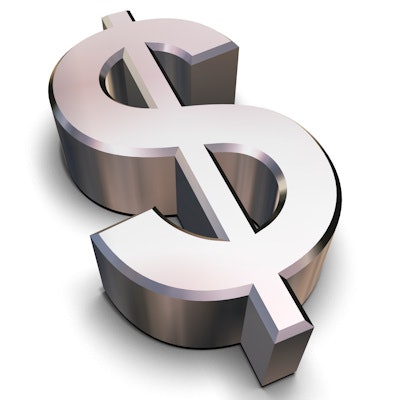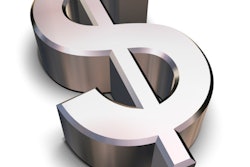
Annual U.S. spending on dental care is projected to reach more than $203 billion by 2027. However the annual growth rate of this spending is one of the lowest of any healthcare spending category measured, according to a February 20 report in Health Affairs.
Spending on dental care will increase by less than $70 billion by 2027, compared with almost $140 billion in projected spending in 2019. This annual growth rate of 4.8% lags well behind the average annual growth rate of overall U.S. healthcare spending of 5.5%. Demographic and economic factors will be overall drivers of the increases in healthcare spending, according to the annual report.
"As a result of economic and demographic trends, we expect health spending growth to increase over this next decade," stated lead author Andrea Sisko, PhD, an economist in the Office of the Actuary at the U.S. Centers for Medicare and Medicaid Services (CMS). "While Medicare spending is expected to accelerate the fastest among payors and contribute to the increase, growth in health prices and disposable personal income are also significant contributors."
2018 numbers
The researchers accumulated figures from CMS' National Health Statistics Group from the Office of the Actuary and the U.S. Department of Commerce Bureau of Economic Analysis and the U.S. Census Bureau.
In 2018, U.S. spending on dental and oral healthcare increased 3.8% to more than $134 billion, up from more than $129 billion in 2017. However, the growth in spending on dental was smaller than overall growth in total healthcare expenditures, which increased 4.4%.
While spending on dental services is expected to increase, total spending in the category significantly trails other healthcare categories.
| U.S. health expenditures for 2013-2027, in billions of dollars | ||||||
| Spending category | 2013 | 2016 | 2017 | 2018 | 2019 | 2027 |
| Health expenditures | $2,881.8 | $3,361.1 | $3,492.1 | $3,646.9 | $3,823.1 | $5,963.2 |
| Health consumption expenditures | $2,728.6 | $3,202.9 | $3,324.5 | $3,470.3 | $3,637.6 | $5,679.9 |
| Personal healthcare | $2,438.0 | $2,851.9 | $2,961.0 | $3,085.3 | $3,242.5 | $5,058.4 |
| Physician & clinical services | $596.6 | $666.5 | $694.3 | $728.0 | $767.6 | $1,172.0 |
| Dental services | $111.1 | $125.1 | $129.1 | $134.0 | $139.9 | $203.9 |
Where did this spending come from? In 2018, households (29%) and the U.S. government (28%) accounted for the largest shares of healthcare spending, followed by private businesses (20%) and state and local governments (17%), the authors reported.
Major payors
Some of the trends in prices and the volume and intensity of services over the projection period may contrast with recent experience, the analysts noted. Specifically, they cited inflation in the cost for healthcare goods and services is projected to play a larger role in the coming decade (averaging growth of 2.5% per year for 2018-2027, compared with 1.1% for 2014-2017) and account for nearly half of personal healthcare spending growth.
Among the major payors, average annual spending growth in Medicare (7.4%) is expected to exceed that in Medicaid (5.5%) and private health insurance (4.8%) over the projection period, mostly as a result of comparatively higher projected enrollment growth.
"The insured share of the population is expected to remain stable at around 90% throughout the period, as net gains in health coverage from all sources are projected to keep pace with population growth," the authors wrote.



















